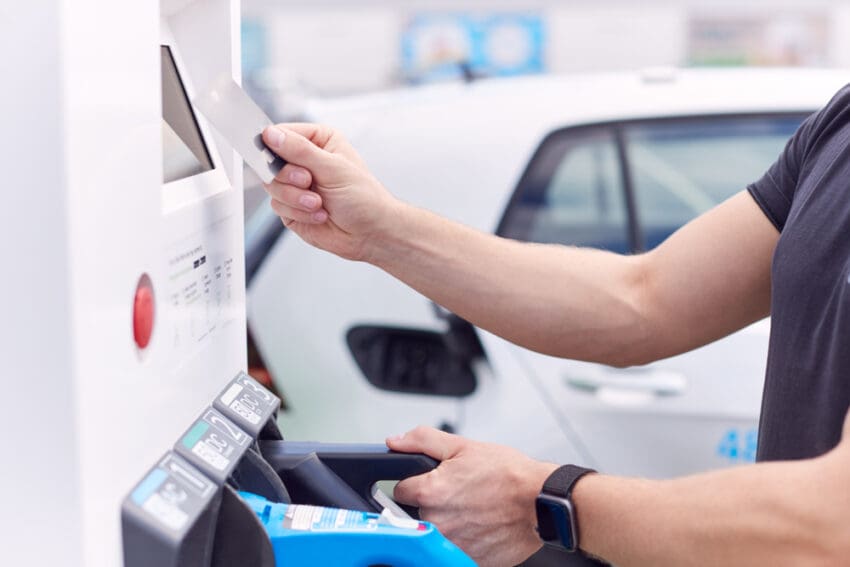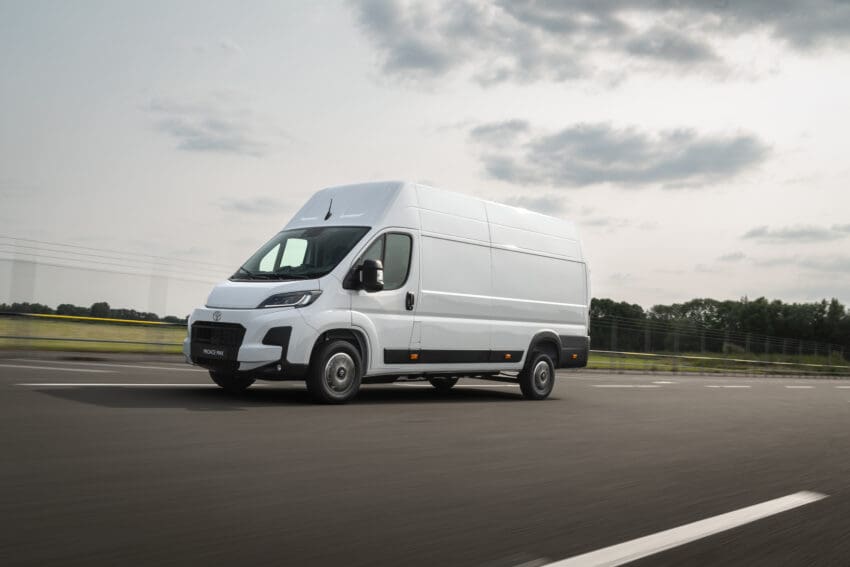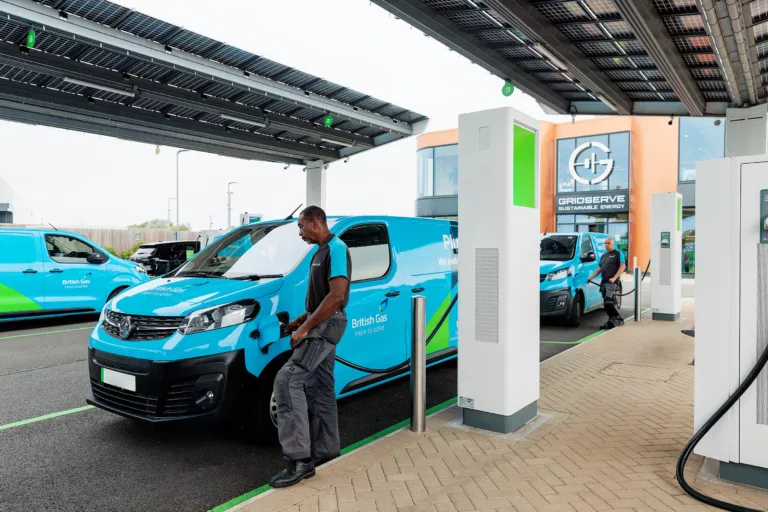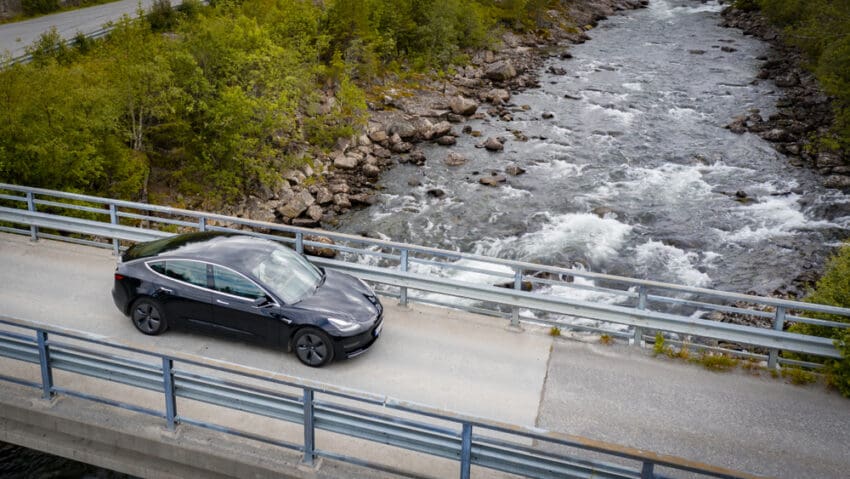
Allstar boss: fleets and manufacturers need support in drive to go electric
We speak to Tom Rowlands, managing director of global EV solutions at business expense specialist Corpay, to get the behind-the-scenes view on how business fleets are shifting to EVs, the challenges and opportunities they face, and how real world charging costs compare with traditional fuel bills
Could you start off by explaining what Corpay and the Allstar brand in the UK is and your involvement with electric vehicles?
Corpay is a large global payments company and vehicle payments is one of the one of the verticals within Corpay. Allstar is our UK fleet brand, and within vehicle payments, obviously, EV charging is an important part of that.
Allstar has been serving some of the biggest fleets in the UK for many years on the fuel card side of things. And clearly as the transition to EV has accelerated, we’ve started to develop some of the EV propositions to set alongside our fuel propositions for mixed fleets as they’re looking to fuel their vehicles, whether that’s with petrol and diesel or electrons.
When did Allstar start taking on EV charging as part of its offering?
We really started driving the first EV solutions about four or five years ago. Things started relatively small and with a few network connections. We’ve really started to formalise the EV division within Corpay and Allstar over the last three years, which is when we’ve started to build out the detailed products for our fleets.
Interestingly within Corpay, our Netherlands-based business Travel Card developed its first solutions in 2016, as that market was slightly further ahead than the UK at that point.
Was the addition of EV charging driven by customers or was it something that you could see coming?
It was more a push factor from our side to start with. We saw the direction of travel and we knew that we needed to build out some of these solutions so that we were ready for when the questions came from the customers. The two things happened relatively quickly, one after the other.
Once we started building out some of these solutions, customers did start to inquire relatively quickly. To start with, we were talking about fleets with perhaps 1,000 vehicles and 10 EVs, so it was a relatively small part of their makeup, but they did want a single provider who could provide them both the fuel and the EV side of things.

Customers definitely pushed us to go quicker in developing the network and developing some of those home charging solutions that we now have. And they have continued to push us to develop faster and faster as it’s become more important for them as the proportion of their fleet that is EV has increased.
From that small start, how dramatic has the change been recently? With sales increasing across the UK, do you seen equivalency in the number of vehicles you’re serving as EVs.
We’re definitely seeing an equivalency in the total number, but if you look within an individual fleet, it is quite interesting.
Many fleets adopted early and pushed to a certain size of EV within their overall makeup, maybe 40 or 50% but I think many fleets have struggled to push beyond that into the 80 or 90%.
There are clearly fleets out there who’ve done that and gone all electric, but for a fleet that operates a diverse set of routes, geographies, locations, pushing past the 40-50% mark gets harder. They take the low-hanging fruit that’s easy to electrify first, and then it gets harder as some of those routes are not yet fit for an EV.
Some of the vans, if they need racking and those kind of things, the weight reduces the range. So we’re very open with our customers when we say – Start with the low-hanging fruit, that’s the easiest stuff, and then work through to the harder stuff. Some of those fleets that adopted very early are now pressing up against the operationally tougher stuff to transition.
So we do see a slowing of the adoption through a fleet as they get into that more difficult stuff to transition.
With that in mind, where is the business balance between EV and ICE now?
I can’t talk specifics, but it’s very similar to the overall makeup of the vehicles on the road in the UK. The sales numbers are rocketing for EVs, which is great news, but that still takes time to then wash through in terms of the total number of vehicles on the road.
So Allstar just really reflects UK PLC in many ways, and therefore the vehicles on the road. So it’s a similar makeup to that.

As a business moving from supplying fuel cards just for ICE to integrating EV charging, how have you had to adapt to that and the far broader and more diverse number of charge point operators compared with fuel station operators?
It’s been a journey to say the least. Allstar has been in a strong position in the fuel card world for many years. And there was innovation within fuel cards, but I don’t think it was anywhere near the scale of innovation required to deliver EV charging.
We’ve had to build a whole new network, as you say, dealing with all new players in the market, some of whom are very new players themselves and therefore figuring it out as they go along. And we’ve had to pull in different types of information via different connections.
So OCPI [Open Charge Point Interface] was new to Allstar. But we’ve also then had to venture into places that we’ve never been. So home charging was not a concept that Allstar had to deal with prior to EVs becoming requirement. The way that we’ve dealt with that is through internal innovation.
So we’ve set up internal teams who have been able to build some of that stuff out. But we’ve also done it through acquisition.
We acquired Mina, which was a UK-based home charging technology business. It was connected with every utility in the UK and many of the home chargers in the UK and was able to provide us with that home charging solution so where a driver goes home, we see the charging that’s being done and we understand the tariff that they’re on and then we reimburse the utility company.
We also acquired PlugSurfing, which was a Berlin-based network aggregator across all of Europe. So they have the P3 platform which now handles all of our roaming connections. And the P3 platform plugs into our core systems for invoicing and billing, which is the core of what Allstar is good at.
Does handling home charging alongside public charging add a layer of complexity that’s not been there before?
It does and it adds in emotion to the process because you’re asking your driver to go home and spend their own money charging your business vehicle. That is why the solution that Mina developed was so smart because it reimburses the utility company before that hits the driver’s home energy bill. So they’re never out of pocket and it removes that barrier, that emotional barrier of: ‘Hey, I’m subsidising your company to charge the vehicle at home’.
From a public charging point of view, are you able to see how the public network has developed and how business users are using the public charging network in the UK?
We have pretty good insight into that. The network has grown exponentially over the past five years. From 2020, when we’re at 20,000 chargers all the way through to the end of last year, we’re at over 74,000 chargers.
The growth has been huge. And I think the nuance within that is the growth has been huge in HPC. So ultra-rapid and fast charging. Three or four years ago, you were looking at a lot of AC slower charging and mid-level charging, maybe 50kW. But the big growth that we’ve seen has been in CPOs deploying hubs big hubs with lots of rapid charge points, which is just critical for fleet.

When we look at our data in terms of where fleets charge, our top networks are all networks that operate hubs and ultra-rapid charging because often that’s where a fleet needs to go. Their downtime is lost revenue and money for a fleet. So if they can charge quickly, they know a charge is going to be available, that’s generally where they’ll head.
They look for reliability, availability, and speed to get themselves moving again, quickly. We do see huge importance in the AC network and slower network, but that tends to be a overnight charge if someone doesn’t have access to home charging, and then they’ll pick up that vehicle ready to go the next day.
So will the rapid expansion of HPC and hubs help fleets make more of a step towards EV?
It’s definitely helping for sure.
I don’t believe range anxieties are such a thing anymore. There’s plenty of places to charge. There’s plenty of high-speed high-quality charges out there. I think the only issue with the fleet side of things is obviously HPC is more expensive.
So then you start to look at the total cost of ownership.
[More chargers] definitely helps in terms of the anxiety and the ability to operate the vehicles, but they do then need to consider the total cost of ownership side of things with HPC charging being relatively expensive.
But we’re also seeing big improvements in depot charging. We’re seeing the ability to charge at home and we’re seeing the improvement on the on-road network. So the combination of those three areas of charging definitely increases people’s confidence to deploy vehicles. If they can charge some of them in the depots, some of them at home, and then when they need to, they can charge them at the HPCs on the road, all of that comes together to give the confidence in the charging.
The mix also, importantly, lowers the overall average cost of the charging so that not everything’s reliant on the more expensive on-road charging.
We know that home charging an EV makes it much cheaper than running an ICE car, but we also know that using high-speed chargers can be far more expensive. Do you have a view on how the running costs of balancing out for fleets between ICE and EV?
It’s difficult to compare them like for like completely. But if you took the pure example of just someone totally relying on public charging and just using the HPC network, clearly that cost is coming out higher than petrol and diesel.
But I don’t think that’s a particularly realistic, regular case. Most fleets have the option to either charge at a depot or at home part of the time, which then brings down the cost. And because the cost of home charging and depot charging is so significantly cheaper than petrol or diesel that mix brings you generally in line with ICE or below.
So there’s not many fleets that are running, in terms of charging costs, above petrol and diesel when you add in that mix of what they’re doing in reality. I would say it’s on par, really, to charge your electric vehicles in terms of cost versus petrol and diesel.
That said, what we were talking about earlier in terms of getting from the 40-50% to the 70-80%, that might be where those costs start to increase, which might be why you see that kind of resistance to get the full fleet over at this point.
Given your global oversight, can you give an indication of where the UK market compares with the international picture?
It’s an interesting question because it depends on the quarter or the month that you’re in, it can be quite up and down. But I would say the UK’s in a very strong position at the moment, particularly in terms of the sales that we’re seeing with the ZEV mandate starting to really kick in and drive the adoption of EVs.
It will be interesting to see how that plays out through the first quarter of this year in terms of what we see, but so far the UK is in a relatively strong position. I think we saw Europe struggle through 2024. So Europe has, I would say higher adoption rates in terms of the actual vehicles on the road, but I think their sales started to struggle a little bit more through 2024 as we saw some incentives pulled from certain markets.
Norway is obviously a global leader in EV adoption but, outside of that, I would say the UK is comparing pretty strongly right now versus other parts of Europe.

I have scope over the US market too and we’re all waiting to see what happens with the new administration. And there’s a bit of a wait and watch in terms of tariffs and other things that will obviously play a big part in what happens in the US as we go forward.
Do you think that with the emissions targets tightening up in Europe this year we’ll see an increase in EV adoption again?
I think we will. We are members of groups like Charge Up Europe and those kind of things. So we know that the policies are in place.
I think the important thing for everyone in the EV industry to remember is the balance between driving forward on the goals, which are obviously very important, but also making it sustainable and economical for the OEMs who have to deliver the vehicles.
Many of the Western and European OEMs are coming up against stiff competition from China in terms of high quality vehicles, low cost vehicles. So we do just need to be, as an industry, a bit cognisant of the fact that we want to go fast, but we don’t want to push manufacturers into a place where it’s not a viable product that that we’re pushing to be put into the market.
So do you think the ZEV mandate is purely positive or does it have the potential to hurt the industry or hurt some car makers?
The goal of the ZEV mandate is to increase EV adoption, and from that perspective it’s working. I think we’ve seen in the media some reservations and struggles or pushback from the OEMs. So that’s exactly what I’m talking about. We need to make the policy is delivering on the adoption of the EV side of things, but it’s not pushing OEMs and other manufacturers into a place where it’s not a viable thing to deliver.
That debate is being had, obviously, and the conversations being reopened, which I think is positive because I think the OEMs needed to hear that they were being listened to. And I think it’d be interesting to see where that lands.





